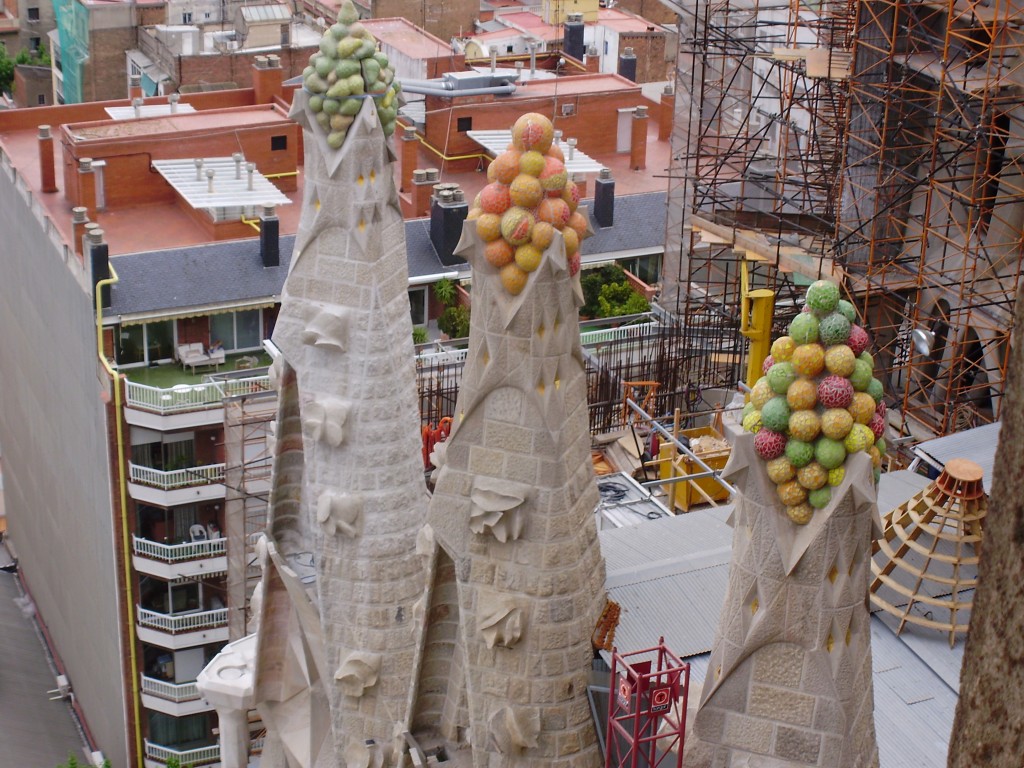Follow us on Facebook!
Our 2009 trans-Atlantic cruise ended in Barcelona. We stayed three extra days there before flying back to Canada and covered a lot of ground in those three days.
Barcelona is the second largest city in Spain and the capital of Catalonia. Its history goes back to Roman times. Situated on the Mediterranean coast, it is known for its warm climate, beautiful beaches, vibrant retaurants and entertainment and most of all, for its stunning architecture, particularly that of Antoni Gaudi, a pioneer of Catalan Modernism.

After leaving the ship, Janis and I and our friends Chris and Sheila took a shuttle bus to our respective hotels, then met up for a walk around, before settling at a restaurant near the Sagrada Familia for lunch.

Construction on this famous church whose name means Holy Family started in 1882. The work continues to this day with completion expected in 2026, the hundredth anniversary of Gaudi’s death.

We first took a walk around the church, which is huge. The immense scope of the project can be seen from the drawing below. The brown parts are the elements finished so far. The white areas, including the mammoth central tower, are barely started.

The text says: “Drawing of the church showing the completed part and the part that is still to be built. It will help you understand the scale of the work. When it is finished it will have 3 facades (alluding to the Nativity, the Passion and the Glory) and 18 towers (12 on the facades, dedicated to the apostles, 4 to the evangelists, 1 to the Virgin Mary, and the highest one to Jesus).”


Considering they plan to have it completed by 2026, they have got their work cut out for them. The half way point was reached in 2010, 128 years into the project. But the project was interrupted by the Spanish Civil War and went slowly for many years. With modern technology, the work has accelerated.

After walking around the outside we went in, first to see where work was continuing inside. We saw massive scaffolds many stories high, as well as artisans moulding giant cement and stone pieces that would eventually be hoisted into place.

After touring the construction zone, we went through an exhibit explaining Gaudi’s style. One of the fascinating elements of Gaudi’s work is his love affair with nature. Themes like giant pieces of fruit, honeycombs, spirals, roosters, a giant turtle supporting a column and so on, abound. Not to mention that the entire church looks like it is a sandcastle with glops of sand dripping off it.

Then another walk around outside to where we could go up the completed towers themselves. We took an elevator up one tower and exited high above the city. The towers soar above the street level offering a fabulous view of Barcelona. And everywhere – work continues.

After wandering around up in the open air high above the city, we went still higher up the spiral staircase in another tower. These giant shafts are layered with scalloped lookout holes.

Then down to the basement for an exhibit of models Gaudi used in designing the church. Some of these models are a good size in themselves.

Without a doubt, the Sagrada Familia is the must-see sight in Barcelona. Even if you don’t tour inside, you must at least walk around this massive edifice. It is nothing short of spectacular. You’ll find a link to an additional photo gallery after this video from the Sagrada Familia website. The video shows a speeded up version of some of the construction so far followed by an animation of the construction yet to be done, ending on the completed structure planned for 2016.
- Additional Photos
- Sagrada Familia Official Website (well worth checking out!)
Follow us on Facebook!
